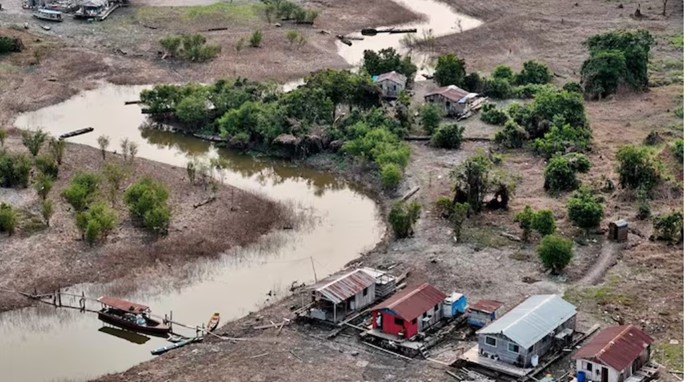
Amazon River Drying Up: A Looming Environmental Crisis
The Amazon, the world's largest river, is facing an unprecedented environmental crisis as water levels continue to plummet, isolating communities and disrupting access to vital resources. Last year's record drought, combined with insufficient rainfall this season, has significantly reduced the river's navigability, severely affecting local livelihoods and trade.
According to the Brazilian Geological Service (SGB), all rivers in the Amazon basin are expected to fall below historical levels, raising serious concerns for both local communities and industries. In Manaus, the Rio Negro has dropped to a depth of 21 meters, down from 24 meters at the same time last year. This decline has prompted industries in the Free Trade Zone to call for dredging to avoid transport disruptions like those seen in previous years.
To address the issue, Brazil's department of transport infrastructure, DNIT, has already begun dredging critical sections of the Madeira River and plans to extend efforts to the Amazon and Solimões rivers. However, the ongoing drought is causing severe navigational challenges, particularly for barges transporting grains for export. Some shipments may need to be rerouted to southern Brazilian ports, increasing costs for producers.
In Porto Velho, Rondônia, the Madeira River has remained at a depth of less than two meters since July, far below its typical 5.3 meters. This is significantly hindering one of the main transportation routes in northern Brazil. Across the Amazon, isolated communities are struggling as falling water levels cut off access to food and essentials, while crops fail and fish populations dwindle, endangering those who depend on fishing for survival.
Climatologist José Marengo warns that the current drought is unlike anything seen before, leaving entire communities stranded. The anticipated increase in rainfall from the La Niña phenomenon has not materialized, further worsening the situation. The "flying rivers" — atmospheric water vapors that transport moisture from the Amazon to other parts of Brazil — have also diminished, depriving southern regions of critical rainfall.
As the Amazon faces this severe crisis, urgent action is needed to address the environmental and social impacts. The dwindling water levels not only threaten local ecosystems and communities but also highlight the growing vulnerability of the Amazon in the face of climate change.